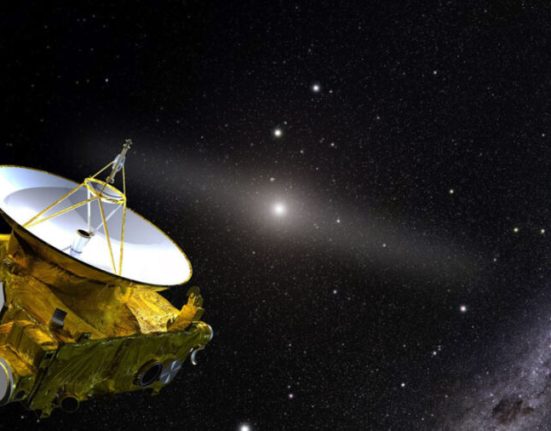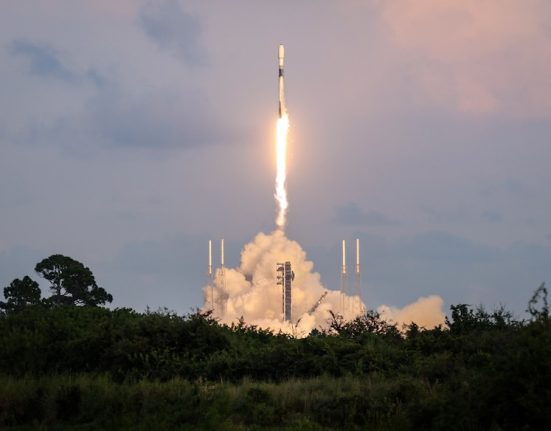 The IAC takes place around the world, such as in Bremen, Germany, in 2018 (above), but only this year has it become more restrictive in terms of the media it accredits. (credit: B. Harvey) |
By Brian Harvey
Monday, July 29, 2024
The International Astronautical Federation (IAF) is one of the oldest and best-known organisations in the space world, best known for its annual congresses, which attract up to 10,000 people. It is also one of the most publicity-hungry, so it is surprising that this year it is closing its doors to the press. Well, some press.
| Previously, the “press” consisted mainly of full-time journalists from well-established institutions. Aviation and Space Technology Week to Air and cosmos to International flightBut the nature of space reporting is different now. |
The IAF was founded in 1950 by the British Interplanetary Society (BIS), the Groupement Astronautique Français and the German Rocket Society. It was made up of amateurs and professionals, who were initially derided as madmen and eccentrics. Such criticism ceased during its eighth congress in Barcelona on 4 October 1957, when, by coincidence, Sputnik was launched. Since then, the IAF has grown, attracting industrial, professional, scientific and advocacy organisations from around the world. Its annual congresses move around the world, usually in Europe every two years, this year in Milan in October.
For the space press, it is the biggest, most valuable and most important gathering on the calendar. In a vast exhibition hall, the big space agencies, such as NASA, France's CNES, Germany's DLR and Italy's ASI, show off their latest designs and models, hand out brochures and make their officials available for interviews. The Japanese space agency JAXA once displayed asteroid rocks collected from the far edge of the solar system.
The real meat of the matter is in the well-illustrated presentations by engineers, scientists and experts on rockets, satellites, missions and applications, from microsatellites to past history and future technologies. Space agency heads speak. Astronauts come: the congress introduced the world to China’s first astronaut, Yang Liwei, and its first female spaceman, Liu Yang. Indeed, China has often had a major presence, displaying full-scale models of its lunar and Martian probes long before anyone had seen them, making it a photo-op event. It’s also newsworthy: it’s no coincidence that announcements and evolutionary outlines of future missions (e.g. Mars Sample Return) are made there. With East-West rivalry in full swing, American astronaut and NASA Deputy Administrator Pamela Melroy spoke about the Artemis Accords.
The press usually has a small room with desks where journalists present their reports. In the past, the “press” consisted mainly of full-time journalists from well-established institutions. Aviation and Space Technology Week to Air and cosmos to International flightBut the nature of space reporting is different now. It's not just that typewriters and phones have given way to laptops and mobiles, it's become more diversified. As Jacqueline Myrrhe, editor of Concrete space route and editor-in-chief of Let's go Taikonauts!In the words of one expert, “The press landscape over the past decade has undergone profound changes. Most traditional media outlets no longer have expert journalists for their space. Freelance journalists and authors have become an indispensable source of high-quality, professional content for outlets, publishers, and online media.” And they were welcome… until this year. (Full disclosure: Although he has been attending these events since 1999, this writer is one of those who are no longer welcome.)
Here's how it works. Journalists usually apply for their press credentials well in advance, in this case in May, sending not only the passport but also the most important document, a professional press card, usually issued by a union. The novelty is that even if an applicant is recognized as a journalist, In good faith The fact that a journalist is admitted to a research forum no longer guarantees admission. The IAF now applies “criteria” to decide whether a journalist should be admitted, but does not disclose them, making it inherently difficult, if not impossible, to defend its position. The criteria are known only to the IAF and have never been made public, despite multiple requests for disclosure. Writers, authors, publishers, podcasters, political parties, academics, institutes in Europe and the United States, even founding member BIS, have all made pleas to have the position reconsidered, but have so far been ignored. The only clue is in the conditions just issued for approved journalists to “encourage” them to “prominently” feature the hashtags, logos and banners of IAF hosts, co-hosts and sponsors, as follows:
- All publications resulting from IAC 2024 must prominently feature the hashtags #iafastro and #iac2024.
- For print/digital materials, you may incorporate the official IAF logo and the official IAC 2024 banner with the names and logos of the event host, co-hosts and sponsors.
- You are cordially invited to the link which contains useful materials such as high-quality logos, banners and a brief summary of the IAF.
Does the IAF now only accept journalists who publicize the organization, including its for-profit commercial sponsors? Journalists go to events to report on what they see and hear, not to do the work of the host's publicity department. The dangers of favoritism and manipulation of press targets are obvious, but it is the only clue we have.
| The IAF now applies “criteria” to decide whether journalists should be admitted, but does not disclose those criteria, making it inherently difficult, if not impossible, to argue their case. |
How widespread are refusals to admit the press? We don't know. The IAF was asked how many journalists had been turned away this year and in previous years, but it hasn't said. Are some countries preferred over others? The big, influential ones or the small ones? Again, we don't know: the IAF doesn't indicate the nationalities of those accepted or rejected, although it knows this from application forms. If these refusals occurred in states considered authoritarian, there would be a scandal (curiously, there were no such cases documented when the IAF was in Beijing in 2013).
France (where the IAF is based) and Italy (host of this year's congress) are members of the European Union and the Council of Europe, meaning they are bound by their laws and conventions. Keeping the press out in this way is contrary to:
- Charter of Fundamental Rights of the European Union (EU);
- Council of Europe Convention on Human Rights;
- The new EU Press Freedom Act, which came into force on 11 April this year;
- EU directives and legislation against discrimination, for example on the grounds of age, gender, disability, nationality and political beliefs.
The issue is certain to be raised in the autumn session of the new European Parliament. The IAF was asked whether it was aware of and trained in the application of these laws and to what extent the refusal of individuals to accept them was compatible with anti-discrimination legislation, but declined to answer.
The key words here are “press freedom” and “media pluralism.” Press freedom makes the general proposition that the press should be let in, included rather than excluded. It is not that there is no place for a handful of journalists among the ten thousand present, or that national security issues are at stake. Jacqueline Myrrhe again says: “The participation of freelancers is not funded by the media or any other organization, all costs are borne by the individual freelance expert. Such a commitment requires enormous dedication” to attend such conferences.
Media pluralism means recognizing the diversity of media: full-time, part-time, independent, general, specialized, popular, technical, using a multiplicity of methods: print, electronic, newspapers, tabloids, magazines, journals, and all the new social media (podcasts, websites, Twitter, Tiktok, Instagram, YouTube, Facebook, LinkedIn, etc.). Not just hashtag advertisers.
One final, but intriguing, question. Has the IAF, without our knowledge, introduced a security screening system for journalists, the appropriate screening agency presumably being the French government's Directorate General of External Security (DGSE)? That might explain some negative decisions. The IAF has not said whether or not it has implemented a security screening system, which is worrying. Is there a blacklist? What is really going on?
Note: We are moderating comments. There will be a delay in posting comments and there is no guarantee that all submitted comments will be posted.













Leave feedback about this